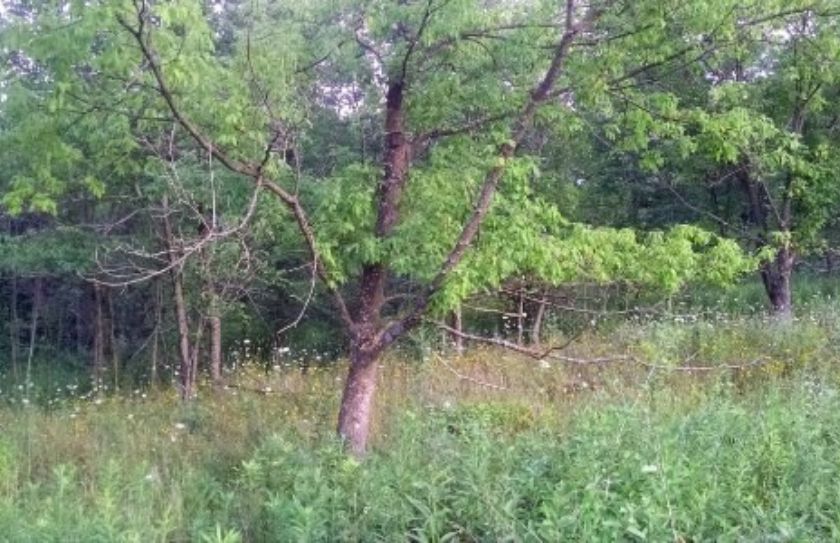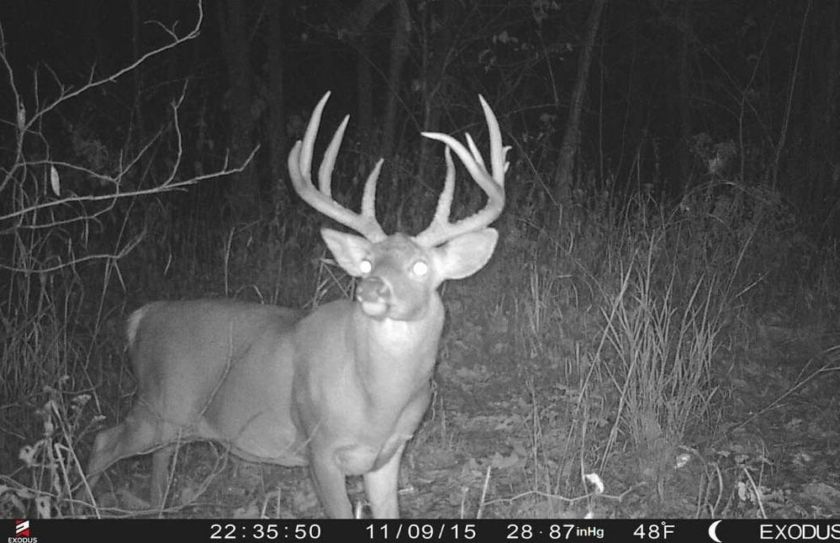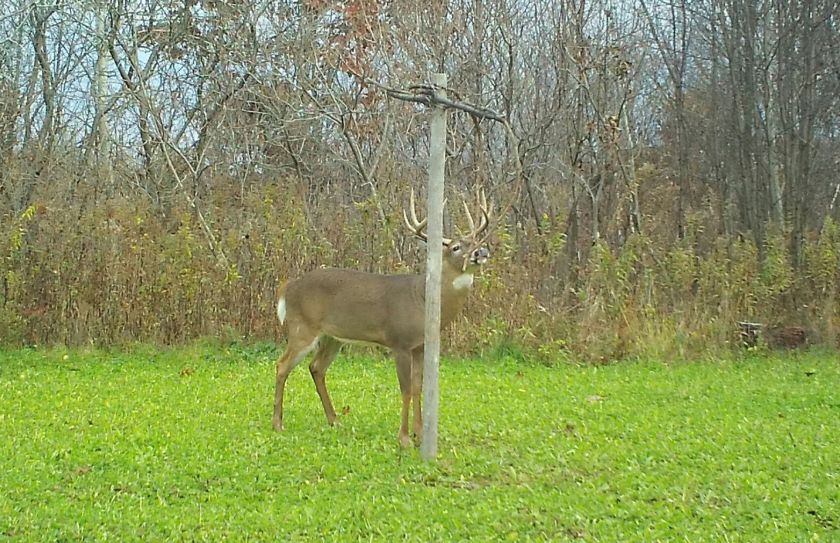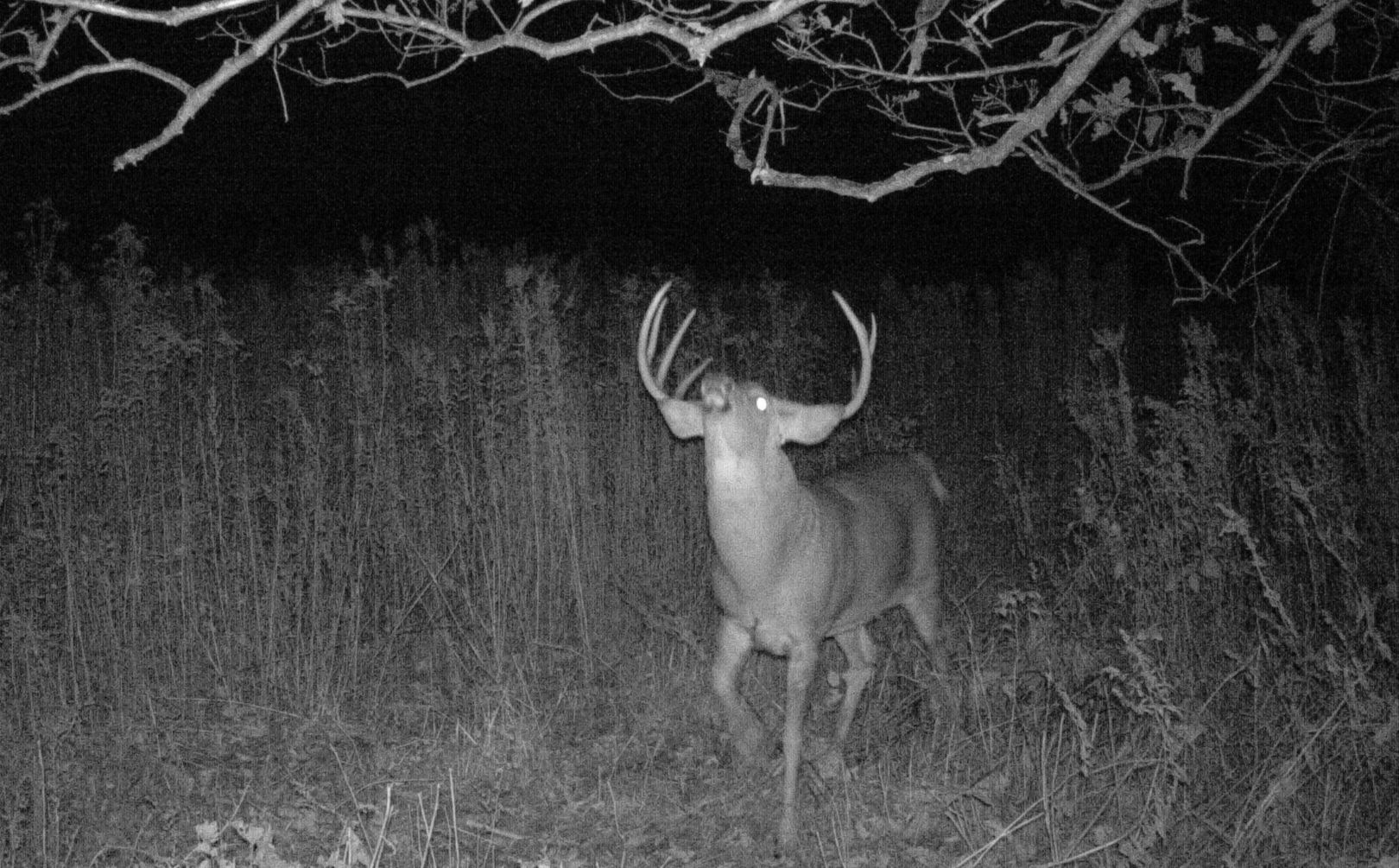
Ensuring that you are using a low impact trail cam strategy on the deer you're scouting is critical for your future success. Trail cams can influence deer movement for several reasons. By observing how deer react to your trail cam, you can learn to hang and hide your cameras with as little impact on the deer as possible.
When going through your trail cam photos, you can conclude if your strategies are affecting the deer in them, and decide how to reduce your impact. Are deer staring at your trail cam? Do they typically notice a high impact location at night, during the day, or both? If deer are detecting your trail cameras in any way, it's typically in your best interest to change your strategy so that they go unnoticed 24 hours a day.
Day Time Trail Camera Setups
If deer are noticing your camera during the daytime, chances are, they are seeing its profile or outline. Deer are highly in tuned to their surroundings. The boxy profile of trail camera can stick out like a sore thumb. There are 3 low profile methods to eliminate the trail cameras outline and lower their impact.
Hang it High
By placing your camera at least 6 feet from the ground, it will be well above a whitetail's line of sight. These high hung low impact camera sets typically go completely unnoticed by passing deer. As a bonus, hanging the camera high and angling it downward, will reduce the risk of your photos being impacted by the sun.
Use Side Cover
If you can't hang it high, break up your cameras profile by leaning branches next to it, or use existing limbs to conceal the trail cam's profile. Crevices in a tree trunk offer another great low impact option. The bottom line is, your camera should be as concealed and discrete as possible.
Hidden Frontal Trail Cam Positions
If nothing else, your trail cameras should be completed covered side-to-side, by the trunk of the tree. Most trail cameras have great camo patterns to help them blend into Treebark, grasses and brush, but not if the camera sticks out when looking straight at it. Allow your low impact trail cam camo to do it's job, and you will experience a much higher level of trail cam success.
Night Time Trail Cam Setups
If deer are looking at your trail cam under the cover of darkness when your camera's profile is less likely to be detected, chances are that deer are seeing the flash or hearing it. Most modern day cameras are completely silent, so be sure to use a trail camera that cannot be heard by deer. If you know that your camera is quiet, the flash or infrared glow may be warning the deer that they are being watched.
Infrared Trail Cameras
Trail Cams have undoubtedly come a long way in the last decades. For a while, infrared cameras were all the rage. Unfortunately, their glowing red lights are visible to deer. When using an infrared camera, night time photos will often exhibit deer staring directly at them. This can have a large impact on the deer that frequent the area, and spook newcomers to the location. Local deer will often develop movements 20-30 yards away from the camera and could potentially keep new deer from coming back if they have seen the glowing red lights.
Traditional White Flash Trail Cams
A shrinking portion of the trail camera market, we've found that these flash cameras actually have little impact on nighttime deer behavior. Also on the bright side, the nighttime photos from these cameras are in full color. The downside? Not many companies still make these cameras. Fortunately, there are other great alternatives.
No-Glow Blackout Infrared Trail Cams
Thankfully, most trail cam companies offer a great alternative to the traditional Infrared cams. No Glow Cameras are nearly fool proof. Deer can't see them at night, and if you use good strategy to conceal their profile during the day, you can create a truly low impact trail cam location 24-7.
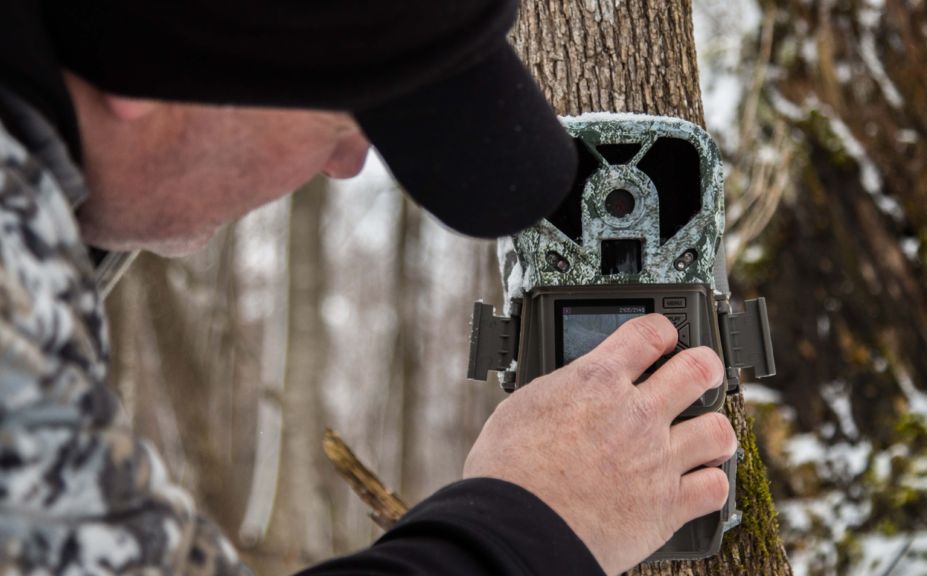
We have put the Exodus Lift cameras to the test and can honestly recommend them for use in your low impact trail cam strategies. No Glow infrared, high quality photo and video capability, and an unbeatable warranty come standard!
Low Impact Trail Cams Setups for Day or Night
If deer are noticing your trail camera both day and night, its your responsibility to figure out why and implement a low impact strategy to reduce their impact. Deer are either seeing it, hearing it, or smelling it! Whether deer see it at night or during the day, you can eliminate which factors are influencing your photos and make a change. If deer continue to notice your trail cam, it's in your best interest to eliminate the camera location altogether so that your scouting efforts do not impact your hunting efforts.
Conclusion
In some areas, a high impact trail cam setup may encourage deer to avoid the location by 20-30 yards. In bedding corridors, rut cruising areas and food source movements, deer may learn to avoid the intended line of travel altogether. By tailoring a low impact trail cam strategy for a specific location, you should be able to get high quality intel to help better your odds of an encounter. We recommend that you test these options on your property and look back through photos from seasons past to determine the best way to implement a truly low impact trail camera strategy.
By Dylan and Jeff
